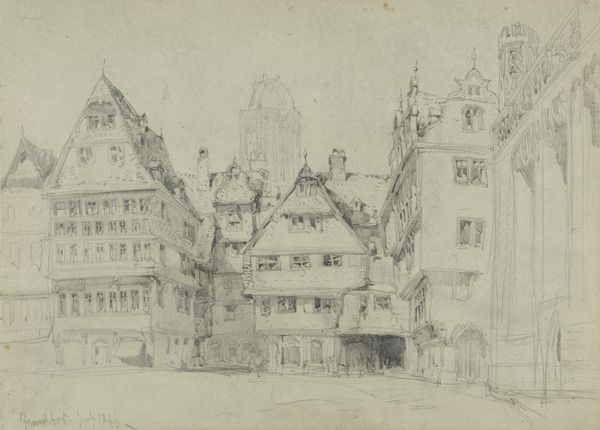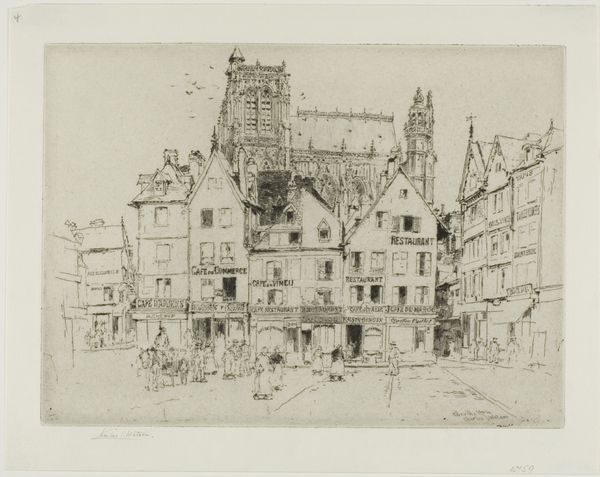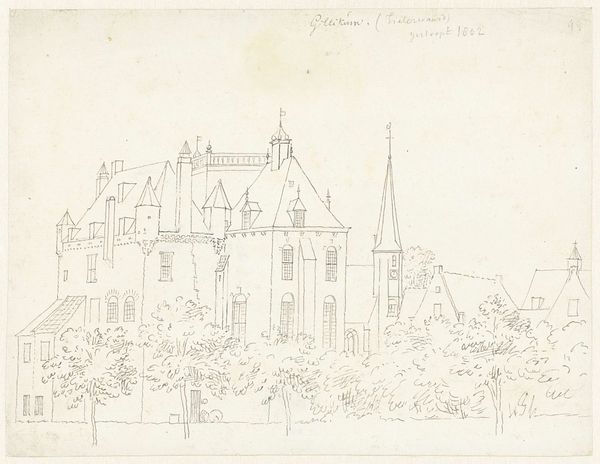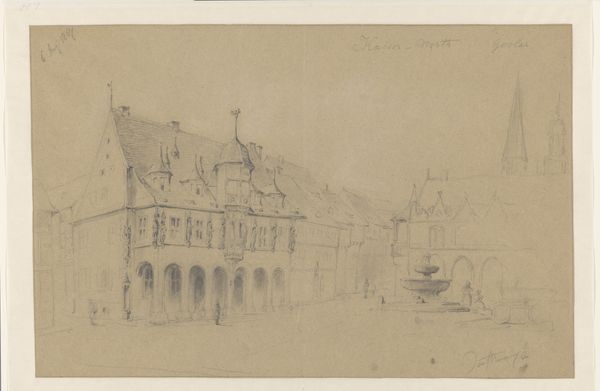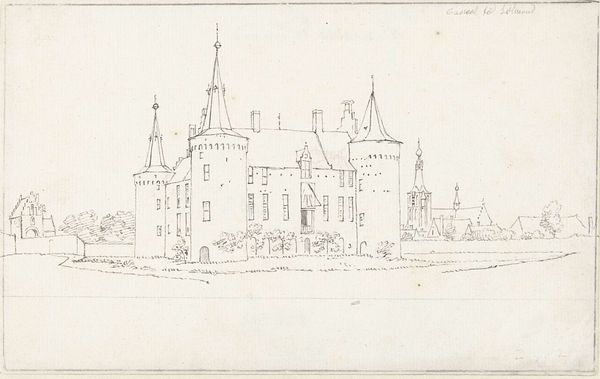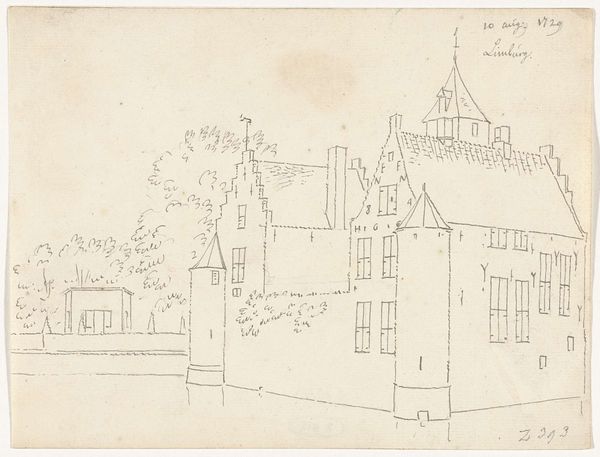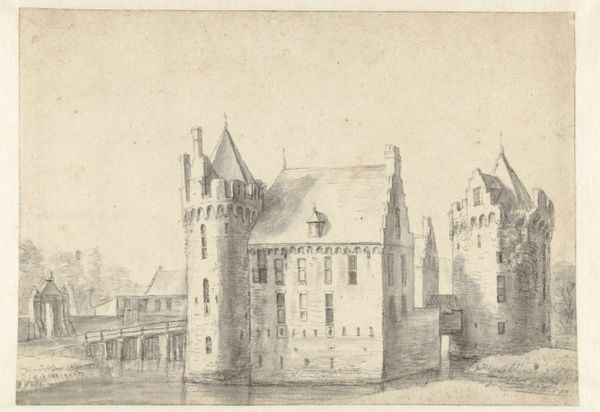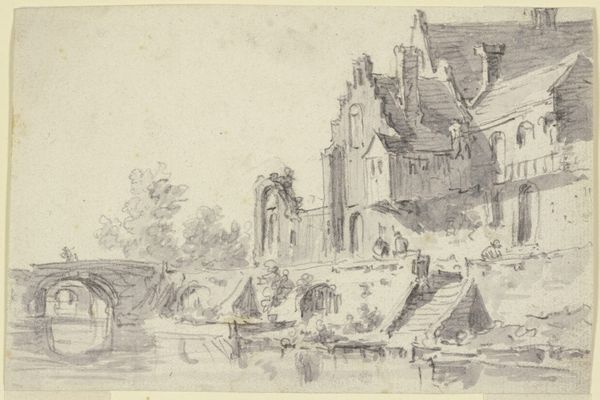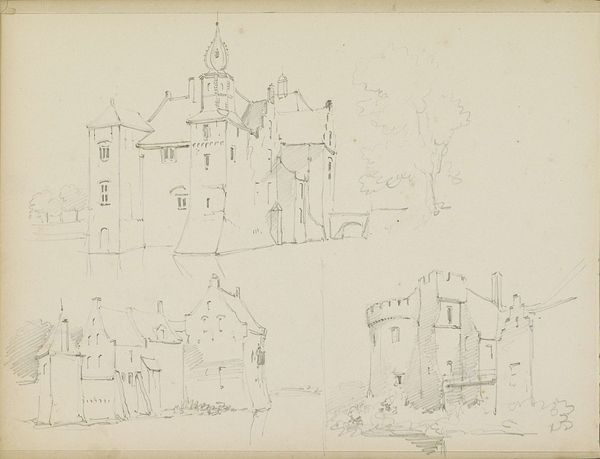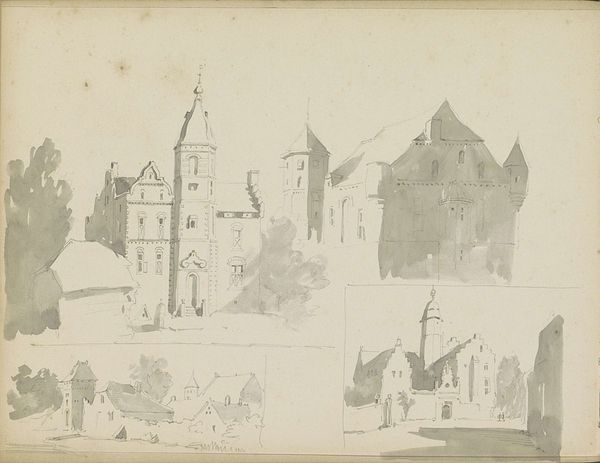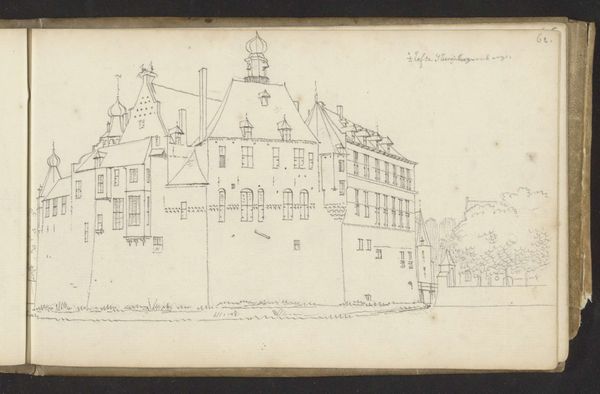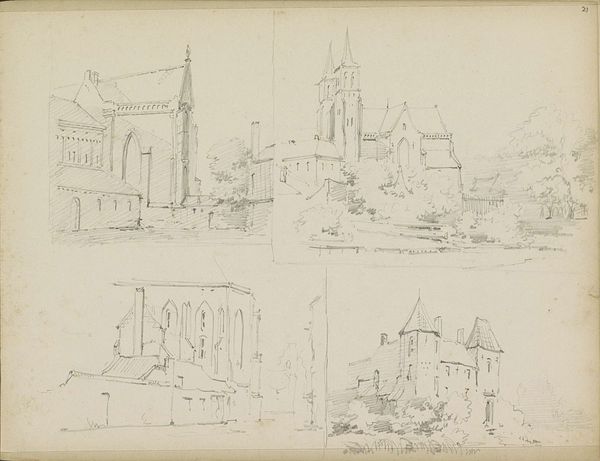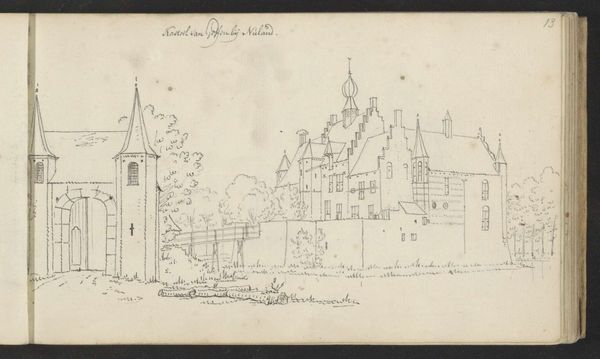
drawing, paper, ink, frottage
#
drawing
#
baroque
#
landscape
#
paper
#
ink
#
cityscape
#
frottage
Dimensions: height 135 mm, width 213 mm
Copyright: Rijks Museum: Open Domain
Curator: Before us, we see "Het Huis te Doorn" created by Jan de Beijer around 1750-1757, a delicate rendering in ink on paper, currently held at the Rijksmuseum. Editor: It's interesting; the subdued palette, almost monochromatic, imbues the structure with a sense of quiet melancholy. The starkness of the line work captures a kind of structural bareness. Curator: Indeed, Beijer employs a rigorous linear technique to describe the architectural elements of the house and the surrounding landscape. One can discern a rather systematic approach in how he models the volumes using hatchings and cross-hatchings to give depth. The stark contrast accentuates the house’s geometric form, underscoring the clarity of its structure. Editor: Considering the social backdrop, architecture was very powerful; these grand houses signified something beyond just living space, a representation of status and societal power. I'm intrigued how the composition implies a subtle critique, isolating this symbol of authority in a fairly desolate setting. It hints at possible changes within Dutch society in the mid-18th century, perhaps alluding to shifting social structures. Curator: Perhaps. However, note how Beijer meticulously delineates the detail of the windows, the subtle texture of the facade, suggesting a keen observational study of architectural elements within landscape tradition, indicative of Baroque ideals, which aimed at grandeur, drama, and the imposition of control over the environment. It echoes ideas about reason and order that shaped that period. Editor: And yet, the drawing's intimacy cannot be dismissed. It brings us face to face with how these structures shape our societal viewpoints. Art can function as an active agent for re-evaluating power dynamics by compelling viewers to contemplate the structures in relation to broader socio-political contexts. Curator: A stimulating proposition, but to close, I would rather underscore how Jan de Beijer's draftsmanship has rendered the spatial aspects of the scene, a carefully staged portrayal in ink, skillfully articulating material, volume, and texture through deliberate hatching. Editor: An interesting synthesis of form and social function. It allows for a multi-faceted engagement that stimulates further dialogue, bridging architecture with the intricate web of social dynamics it represented and the narratives they carried.
Comments
No comments
Be the first to comment and join the conversation on the ultimate creative platform.
